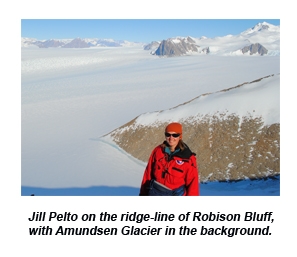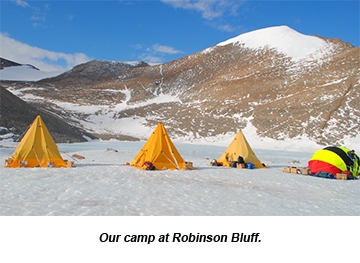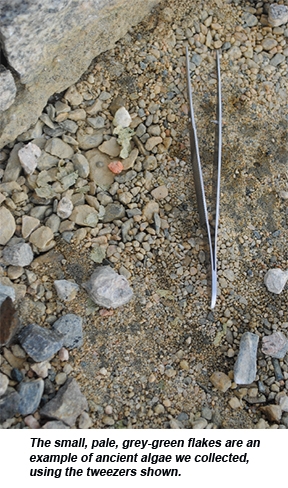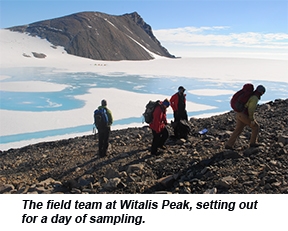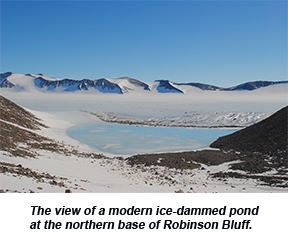Amundsen Liv Glacier Age Expedition (ALGAE)
Holocene Deglaciation at Amundsen and Liv Glaciers, Transantarctic Mountains, Antarctica
Field Team Members: Dr. Brenda Hall, Joel Gombiner (pHd candidate at UWashington), Jessica Badgeley (phD candidate UWashington), Jill Pelto, Karen Hilton (mountaineer), and Dr. John Stone (UWashington)
December 2016 – January 2017
Funding Source: National Science Foundation
Blog link: https://umaine.edu/earthclimate/research/glacial-geology-and-geochronology-research-group/news/
Background:
The Antarctic Ice Sheet is a dynamic system whose role in and response to ice-age cycles is complex and not well understood. Because the ice sheet contains a volume equivalent to ~58 m of global sea level, its contribution to sea-level rise during current warming is a major concern (Fretwell et al., 2013). As a result, it’s highly important to better understand the stability of the ice sheet; to do so this study intends to further our understanding of the ice sheet’s sensitivity to climate change indicators, such as sea-level rise. It addresses the Last Glacial Maximum, and more specifically, the subsequent retreat of the ice sheet in the Ross Sea.
The study area in December 2016-January 2017 was at Amundsen Glacier (~85oS, ~159oW), which is sourced from the East Antarctic Ice Sheet and flows through the Transantarctic Mountains to the ice shelf. We are working at nunataks, or ice-free peaks, near the modern termini of the glacier at the ice shelf. The objectives are to measure former ice extent and elevation using glacial mapping and to develop a chronology for subsequent ice fluctuations. Of particular interest are the final stages of deglaciation and the timing of the transition from grounded to floating ice. Timing is determined from radiocarbon dates of algae from ice dammed ponds are collected to produce age vs. elevation transect of ice recession, as well as from Beryllium-10 cosmogenic dating from glacial erratics collected on the ridge-lines. The results of this study will provide clues about the forcing mechanisms involved by evaluating the timing and nature of the retreat of the Antarctic Ice Sheet in the southern Ross Sea region after the LGM.
We worked at two locations near the mouth of Amundsen Glacier: Robinson Bluff and Witalis Peak. At Robinson Bluff the warm and wet (for the Antarctic!) landscape seemed to have made preservation of ancient algae low; but we had more success at Witalis Peak and were able to date 17 algae samples. Initial results indicate the the modern configuration of Amundsen Glacier was attained around 3,000 years ago, indicating that grounded ice in the Ross Sea reached close to its present position shortly after this time. We have another field season December 2017-January 2018 at Liv Glacier, which is just north of Amundsen Glacier, and hope to strengthen this data set and these initial results through our work at this location.


